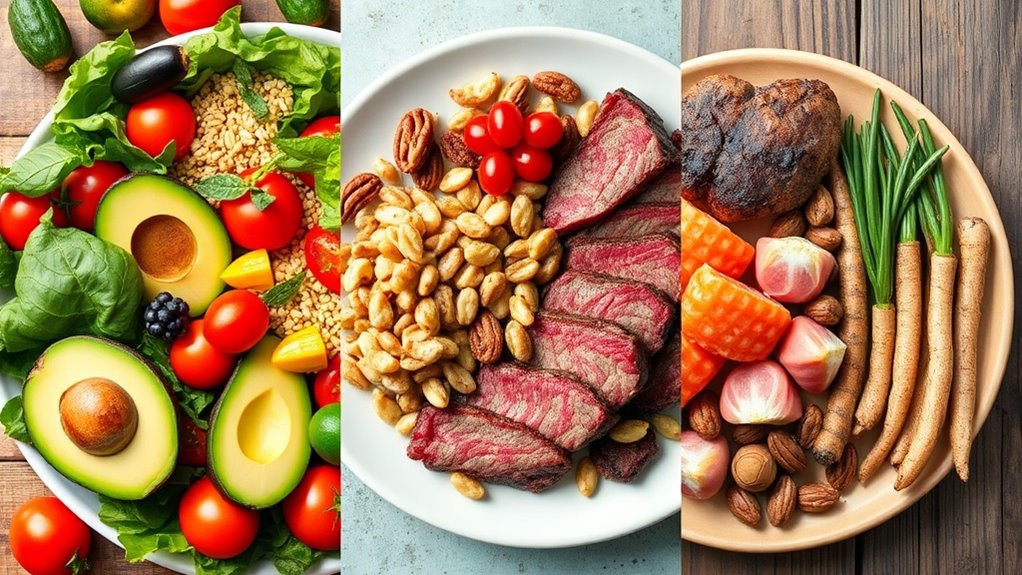Is Intermittent Fasting the Weight Loss Solution You’ve Been Looking For.
You’ve probably wondered if intermittent fasting could be your weight loss answer, cycling between fasting and eating to cut calories and boost metabolism. It’s backed by studies showing fat loss benefits, but results vary, so check with your doctor first. Let’s explore if it’ll fit your lifestyle.
Key Takeaways
- Intermittent fasting promotes weight loss by reducing calorie intake through shorter eating windows.
- It boosts metabolic rate and enhances fat burning, making it effective for shedding pounds.
- Methods like 16/8 have been shown in studies to lead to significant calorie reduction and weight loss.
- Research indicates it improves insulin sensitivity, supporting better metabolic health for sustained results.
- Start with a simple approach, like a 12-hour fast, and focus on balanced meals for long-term success.
Understanding Intermittent Fasting Basics
Have you ever wondered how intermittent fasting can simplify your eating habits while promoting weight loss?
Intermittent fasting involves cycling between eating windows and fasting periods, making meal planning easier without counting calories.
For instance, you might try the 16/8 method, fasting for 16 hours and eating within an 8-hour window, like from noon to 8 p.m.
Studies show it improves insulin sensitivity and metabolic health, but it’s not a one-size-fits-all approach.
Always consult a doctor before starting, as individual responses vary.
You’ll find it practical for resetting routines, focusing on nutrient-dense foods during meals.
Additionally, intermittent fasting can trigger autophagy, aiding in cellular repair processes.
How Intermittent Fasting Promotes Weight Loss
When you practice intermittent fasting, you naturally reduce your calorie intake by shortening your eating periods, which studies show leads to weight loss.
It also boosts your metabolic rate, allowing your body to process energy more efficiently during fasting times.
Moreover, this approach enhances fat burning, giving you a balanced way to achieve sustainable results.
Additionally, intermittent fasting promotes metabolic flexibility, enabling the body to switch between glucose and fat for energy, which further supports weight loss efforts.
Reduces Calorie Intake
Intermittent fasting limits your eating window, naturally cutting daily calorie intake and supporting weight loss.
By restricting when you eat, you’re less likely to snack mindlessly, creating a calorie deficit that drives fat reduction.
Studies show this approach can reduce overall consumption by 20-30% without constant hunger, as your body adapts quickly.
However, it’s not a magic fix; you must choose nutrient-dense foods during your window to avoid nutrient gaps.
Track your intake practically with apps, and combine it with balanced meals for sustainable results, ensuring long-term health benefits alongside weight management.
Boosts Metabolic Rate
One key way intermittent fasting promotes weight loss is by ramping up your metabolic rate through hormonal shifts and cellular processes.
During fasting windows, your body ramps up norepinephrine, actively increasing your basal metabolic rate so you burn more calories at rest.
This shift, along with processes like autophagy, enhances cellular efficiency and energy use, making your metabolism more responsive.
Research shows intermittent fasting can boost metabolic rate by 3-14%, based on studies in healthy adults, though results vary by individual factors.
Practically, you’ll want to start slowly and monitor how it affects your energy levels for sustainable benefits.
Enhances Fat Burning
Fasting periods prompt your body to tap into fat stores more efficiently, shifting from glucose reliance to fat oxidation as a primary energy source.
This metabolic switch, supported by studies showing increased fat breakdown during fasts, helps you burn more calories from fat reserves.
You’ll notice greater weight loss potential when combining IF with balanced meals and exercise, as it curbs insulin spikes and enhances lipolysis.
Exploring Different Intermittent Fasting Methods
How might you navigate the array of intermittent fasting methods to suit your weight loss goals?
Popular options include the 16/8 method, where you fast for 16 hours and eat within an 8-hour window, the 5:2 approach with two days of calorie restriction, and Eat-Stop-Eat with full 24-hour fasts.
Research from studies, like those in the New England Journal of Medicine, shows these methods reduce calorie intake effectively.
Evaluate your routine: If you have a set schedule, 16/8 fits easily; for flexibility, try 5:2.
Start with a simple plan, track adherence, and tweak based on what works practically for you.
To enhance your experience, listen to your body when choosing and adjusting your fasting schedule.
Health Benefits of Intermittent Fasting
Intermittent fasting doesn’t just support weight loss; it can enhance your overall health in surprising ways.
Research indicates it improves your insulin sensitivity, helping regulate blood sugar and reduce diabetes risk.
You’ll experience lower inflammation, supporting heart health by lowering blood pressure and cholesterol levels.
It also triggers autophagy, a cellular cleanup process that may boost longevity and cognitive function.
While evidence is promising, benefits vary by individual, and it’s not a cure-all—always consider your unique health needs for balanced results.
Additionally, studies have shown that intermittent fasting can lead to greater weight loss than traditional calorie-restricted diets.
Practical Tips for Starting Intermittent Fasting
When you’re considering intermittent fasting, it’s essential to start slowly and strategically to build sustainable habits.
Begin with a 12-hour overnight fast, easing into popular methods like the 16/8 protocol, where you eat within an eight-hour window.
Stay hydrated by drinking water and herbal teas to manage hunger.
Focus on balanced meals with proteins, veggies, and healthy fats to maintain energy.
Consult a doctor first, especially if you have health conditions, to ensure it’s safe.
Track your intake simply, avoiding extremes, and adjust based on how you feel for a practical approach.
Additionally, to help break through weight loss plateaus, consider incorporating caloric cycling into your intermittent fasting plan.
Long-Term Sustainability of Intermittent Fasting
Maintaining intermittent fasting over the long haul helps you achieve lasting weight control if you adapt it wisely.
Evidence from studies, like those in the New England Journal of Medicine, shows IF can sustain weight loss by improving insulin sensitivity, but it’s not foolproof—some people struggle with adherence due to social or physiological factors.
You balance this by customizing your eating windows, incorporating variety in meals, and tracking progress without obsession.
Stay practical: pair IF with balanced nutrition, exercise, and rest; if hunger or mood dips persist, consult a doctor to tweak your approach for ongoing success.
To enhance long-term success, consider resetting your hormones by prioritizing quality sleep and balanced meals.




